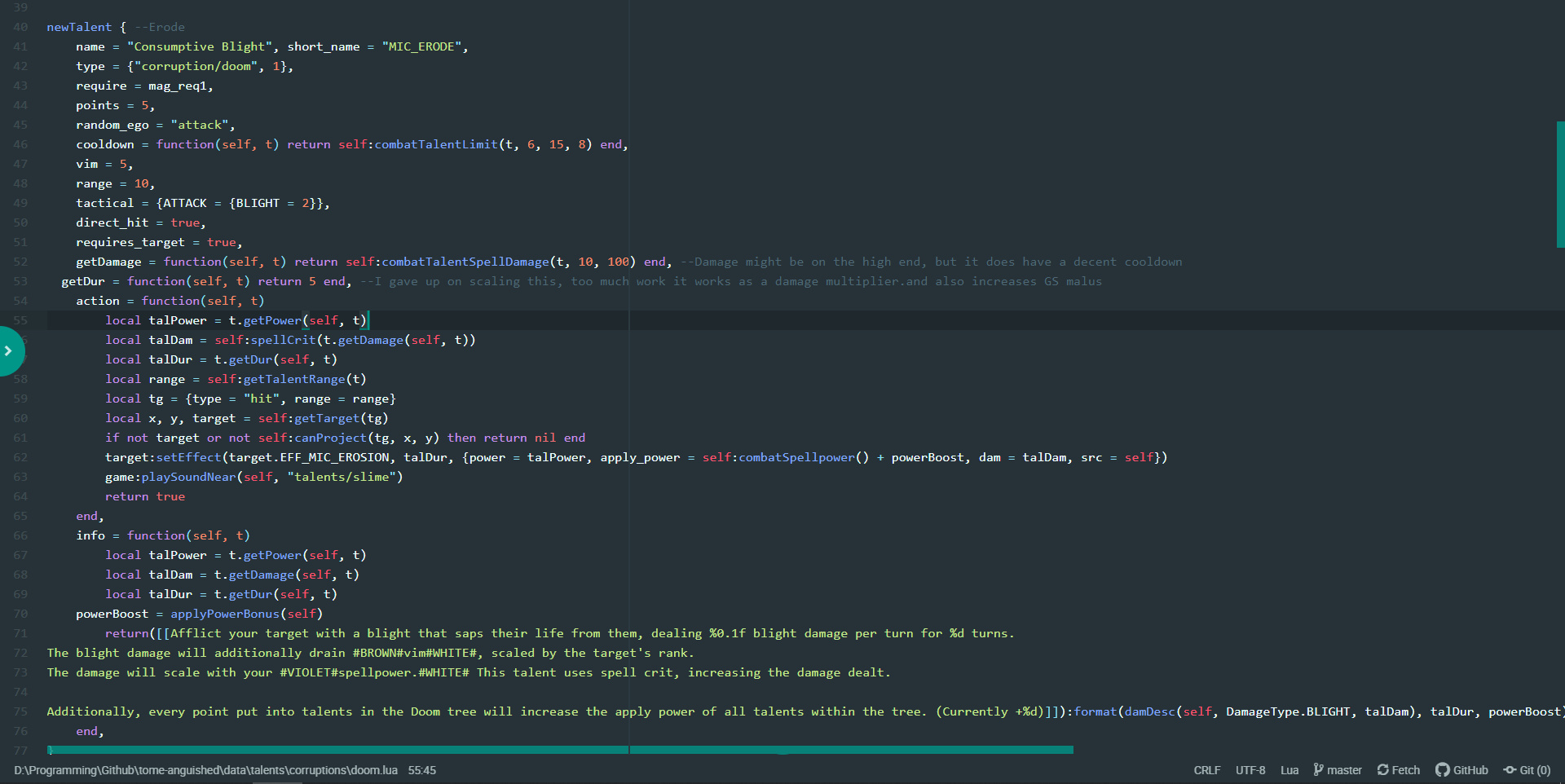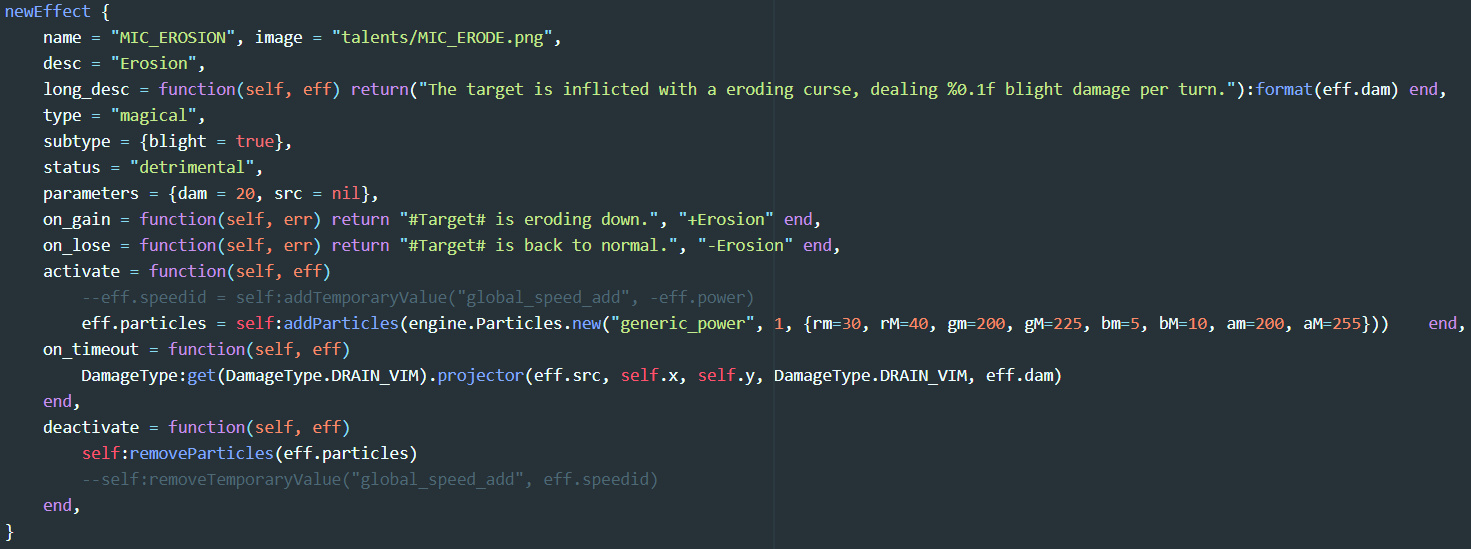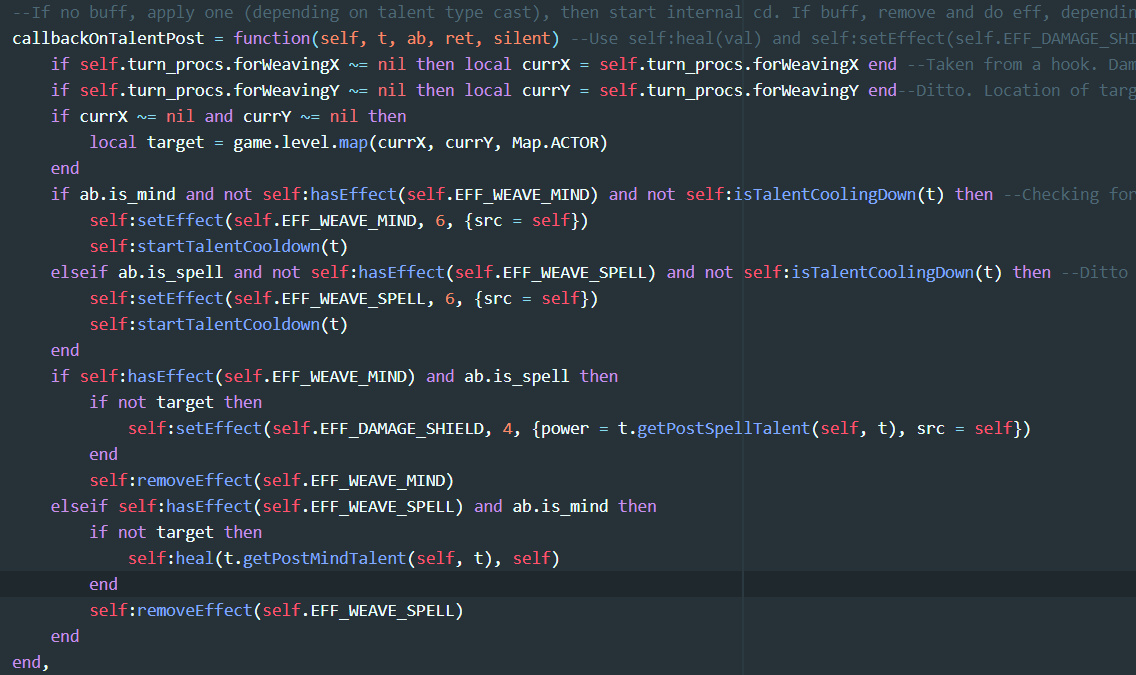Technical
Lua is an odd little language, and Lua hooked onto C++ through means of libraries is even stranger, so beware of these screenshots.

(To actually view the code I would suggest opening the image in a new tab or zooming in, this image was mostly to demonstrate size of a single talent).
One of the shorter talents in this file, this image shows the general layout of what one ability looks like. In the Anguished class, each talent is defined as a table with set properties, the main parts of a talent are the action function and info function. Everything else is either just a simple property or for organization/cleanliness, such as defining later calculated parts of the talent early. The action function holds everything the actual talent does, handling targeting, damage projection, and status effect projection.

Much like how talents are defined, status effects are tables as well. This image is the status effect that the previous example applies. A status effect's behavior is defined by its activate, deactivate and on_timeout (tick) functions. This one is a simple damage over time status effect (see on_timeout doing a damage projection), that gives the projector some of their casting resource back through use of a special damage type (DamageType.DRAIN_VIM). DamageTypes are also exceedingly useful for getting the right talent behavior.

This is an event-based talent. Named Weaving, it calls this code snippet whenever the "owner" of the talent finishes using a talent. It applies a certain buff to them, or if they already have the buff and cast a talent that meets the requirements, then the buff is consumed and you get a special effect. Callbacks, like most event systems, are exceedingly useful at getting the right effect exactly where you want it and remove the need to deal with the game's code directly. Without a callback, direct override of the game's code is needed... and that is generally very bad for compatibility.
Through a combination of talent definitions, status effect definitions, DamageType definitions and reading a whole lot of engine code, I achieved the expected behavior for Anguished. It was very much a self-teaching process, as each error or question about how to do something meant going back and reading pre-existing code in the game. This gave me important exposure to the process of reading other people's code, a skill that is sadly often not emphasized in coursework.